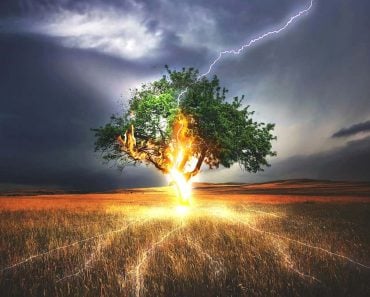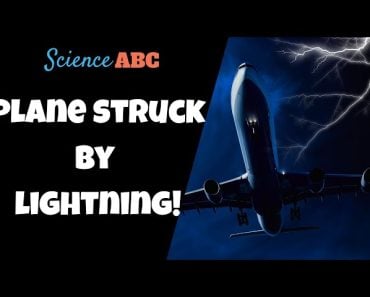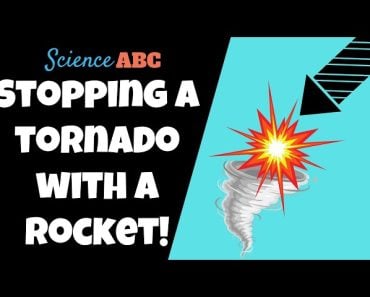Table of Contents (click to expand)
The power of a lightning strike is too great to be harnessed by present day technology. The electrical components that would be necessary to capture the energy of a lightning bolt would be destroyed by the bolt’s volatility. Additionally, lightning is a sporadic event, so it would be difficult to rely on it as a power source.
If you’ve ever watched the movie Back to the Future (1985), then you probably remember the way Doc Brown discovers a novel technique to send Marty from the year 1955 to the year 1985. In order to power the time machine, he needed an enormous amount of energy. With no plutonium available, he surmised that only lightning carried enough energy to adequately power the time machine. Since he knew precisely when and where a lightning strike would occur, he used the power of lightning to send Marty back to the future! Pretty neat, huh?
Thinking along those same lines, have you ever wondered whether we can harness energy from a resounding lightning strike?
Recommended Video for you:
Lightning
Every time you hear a rumble in the sky, seconds later, you invariably look up and see some flashy zig-zag patterns of lightning criss-crossing the sky. Basically, lightning is an electric current that primarily forms inside clouds, but sometimes forms between the clouds and the ground, resulting in what we call a bolt of lightning.
Power Of A Lightning Strike
Lightning is not only bright, but also hot. The temperature of lightning is around 27,000 degrees Celsius, which is roughly six times hotter than the surface of the sun! When a lightning strike occurs, it can burn the surrounding air due to its extreme temperature. Lightning carries few billion joules of energy. To put that in perspective, a single bolt of lightning can carry as much energy as a few hundred liters of gasoline.
Energy and power have a simple relation—electric power can be calculated by dividing the value of energy by time. Since a high amount of energy is passed through the air in an infinitesimally small amount of time (a few microseconds), the electrical power associated with lightning is also very high.

Despite being a carrier of a massive amount of energy, extracting energy from a thunderbolt to power our homes isn’t technically feasible.
Challenges Associated With Harnessing Energy From A Lightning Strike
Need To Install Highly Sophisticated High-power Electrical Systems
First of all, absorbing the incident lightning strikes and then smoothly converting them into electrical energy to easily power our homes and industries would be an arduous engineering task. To do so, we would need to redesign our electrical systems and install complex power systems for capturing lightning bolts. To attract and capture lightning, sophisticated equipment like tall metallic iron rods extending high above the ground would be required. This would be risky and entail numerous safety hazards.
However, the biggest challenge would be to absorb the humongous burst of energy per unit area that lightning brings with it. Present-day electronic components like capacitors, transistors, ICs, flywheels, etc. aren’t really designed to withstand sudden outbursts of electricity. On average, a lightning strike contains 5 billion joules of energy. On top of that, it barely lasts more than a few microseconds (a very short time when we’re talking about billions of joules), which makes it very difficult to capture so much energy quickly.
Wide Variation In Intensity
There is no constant power observed in lightning strikes. Although we mentioned about 5 billion joules, that is a rough estimate. In reality, this amount varies wildly. In some lightning strikes, the power can be much higher than the average, while in others, it can be ludicrously low. Therefore, this makes the idea of setting up a lightning-harnessing system quite unpredictable and impractical.
Sporadic Nature And Uneven Distribution
Then, there is the fact that lightning strikes are totally sporadic. Some areas receive far more lightning strikes, while others are nearly immune to such weather patterns.

Although there are few million lightning strikes on Earth every year, the distribution of these strikes is highly skewed. Most lightning strikes occur in tropical and remote mountainous regions. Designing and setting up state-of-the-art energy storage and conversion in such geographical locations is even more challenging from an economic standpoint. Furthermore, the task of distributing this energy to a populous region would entail its own set of operational challenges.
Too Much Power; All At Once
Another big problem with capturing lightning is the dynamics of electricity. Lightning brings with it a very high voltage, on the orders of kilovolts. Most of the electrical and electronic devices or appliances that we use work on comparatively lower voltages. Thousands of volts appear and disappear almost instantaneously. This volatile nature of lightning is likely to damage equipment, as a huge amount of energy is deposited all at once. Our present-day electronic components aren’t really designed to withstand such sudden impulsive spikes in voltage. Batteries—a core electronic component—would also be susceptible to such an abrupt gush of energy. Conventionally speaking, batteries are designed to charge slowly and steadily.
Also, much of the energy of the lightning bolt is dissipated in the form of heat and light. The actual electric energy available for conversion is much less.
Understanding Infeasibility With An Example
Let’s try to understand why it is not that great of an idea to harness energy from a lightning strike with a rough calculation. A typical bolt would provide about 300 kilowatt hours of energy. An average American home uses about 1000 kilowatt hours of electricity per month on average. So, going by this calculation and assuming that we could somehow install a lightning energy harnessing system at home, three bolts of lightning would be required every month. Think about how likely it is that there would be three guaranteed lightning strikes in the same spot where the energy harnessing system is installed? Quite rare, right? Even assuming that we could somehow design an energy harnessing system, it’s very unlikely that it would receive a lightning strike on a regular/predictable basis. The volatility of lightning strikes in itself is a hassle to deal with, let alone the engineering constraints of capturing and storing electricity from a lightning bolt.
A Final Word
Lightning, theoretically, is a tremendous source of energy. However, it’s best that you make use of it only when you’re in a very, very desperate situation, such as when you’re stuck in the wrong time and are fortunate enough to have a genius like Doc Brown standing beside you!
References (click to expand)
- Is there a way to harness electricity from lightning?. The MIT School of Engineering
- Storing Energy From Lightning | Physics Van | UIUC. The University of Illinois Urbana-Champaign
- Why can't we extract electricity from lightning? | The Independent. The Independent
- Helman, D. S. (2011, May). Catching lightning for alternative energy. Renewable Energy. Elsevier BV.













